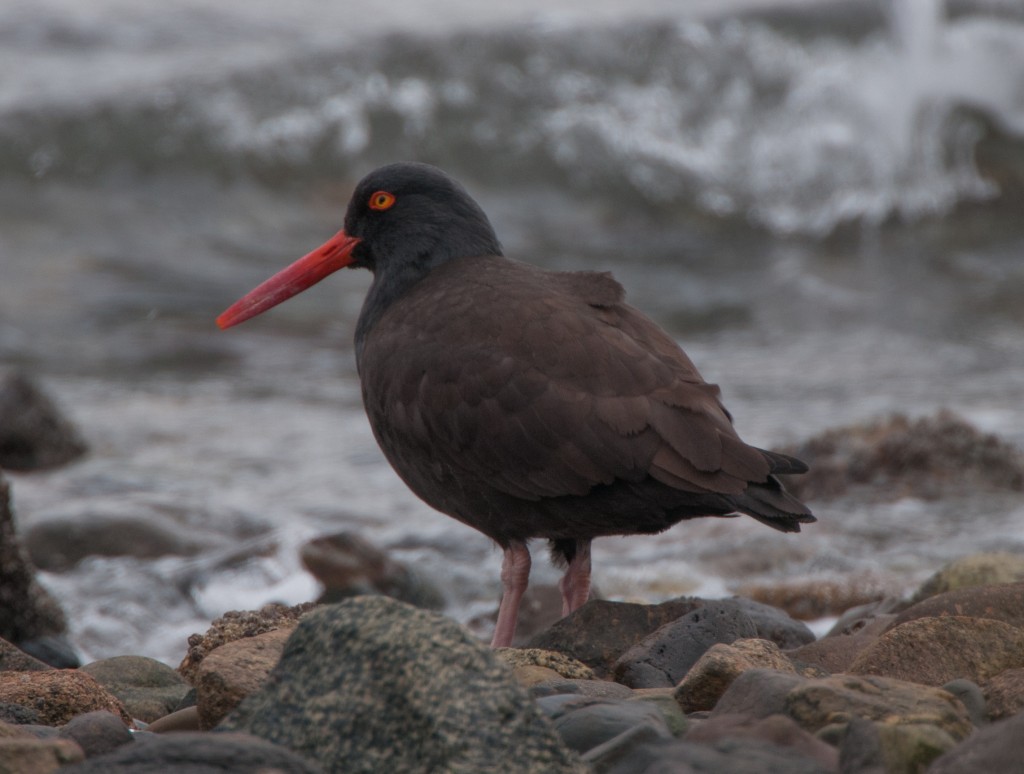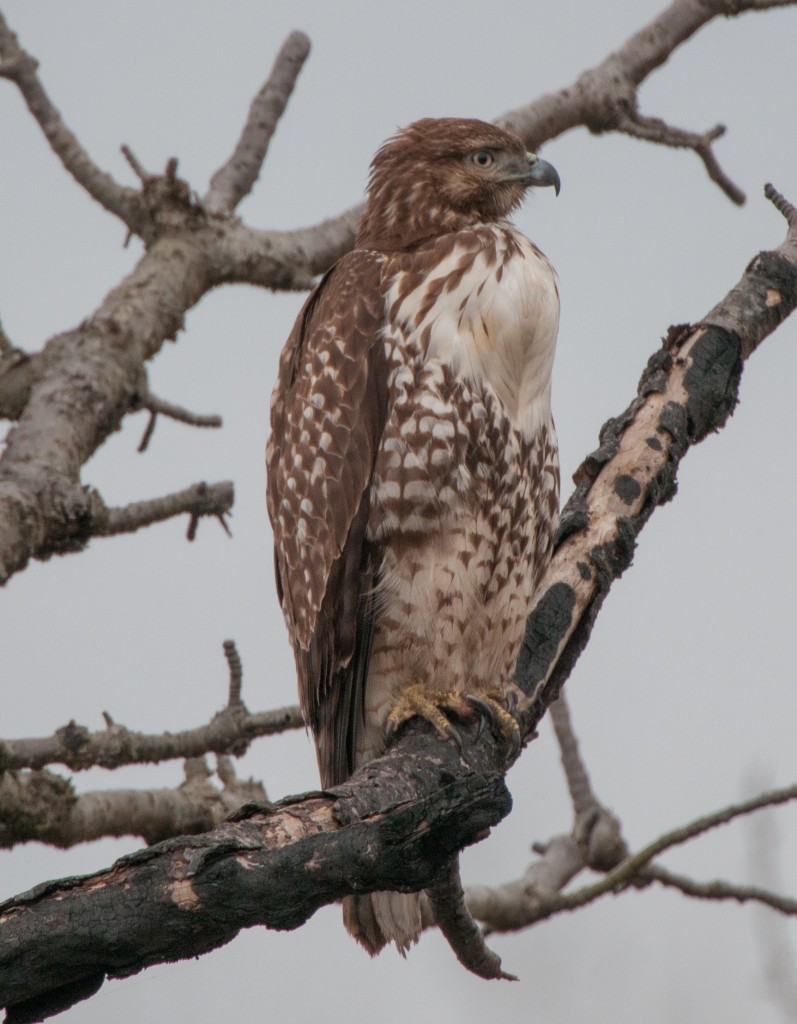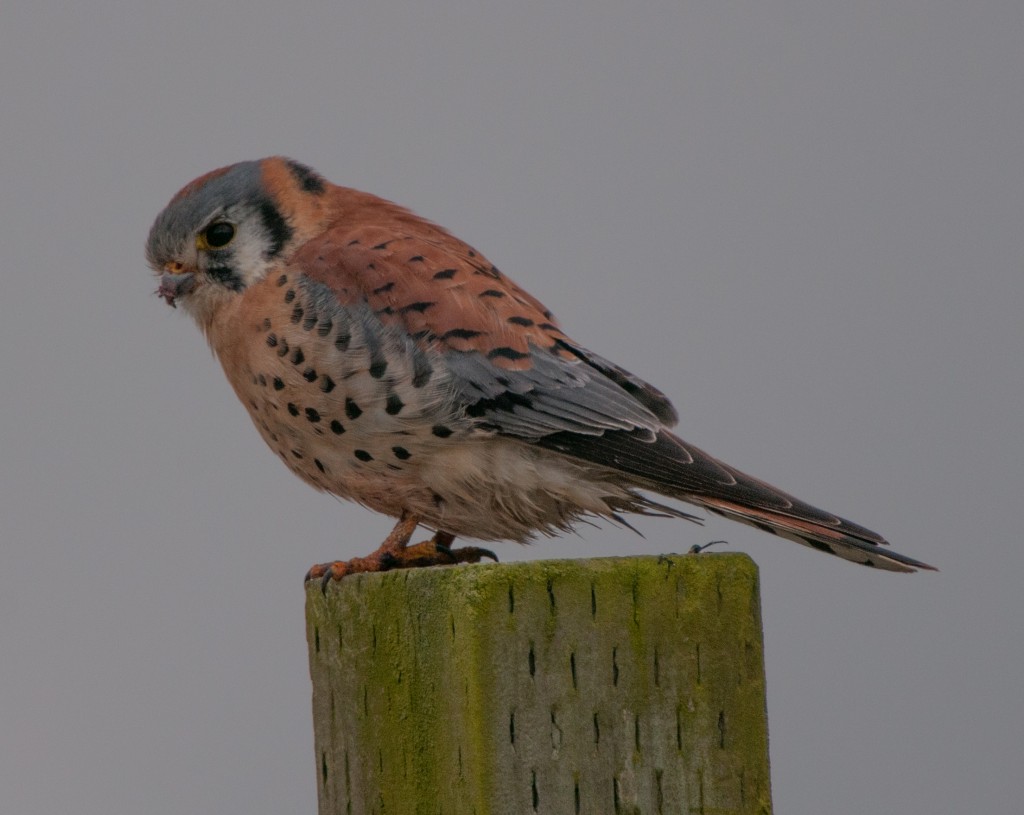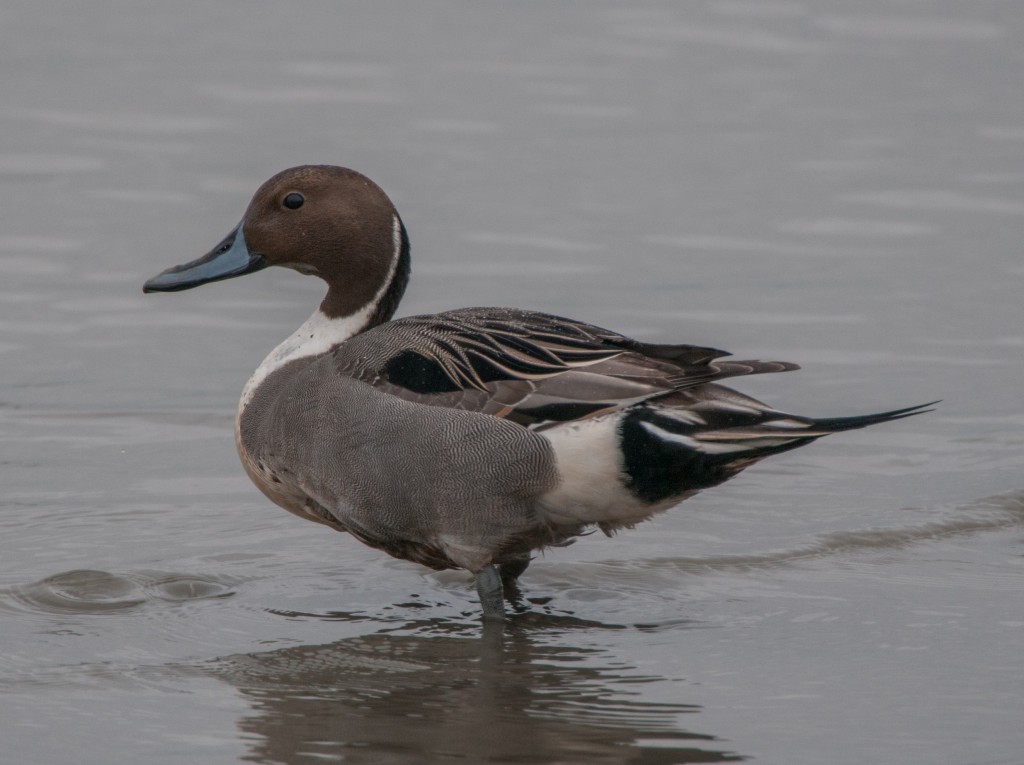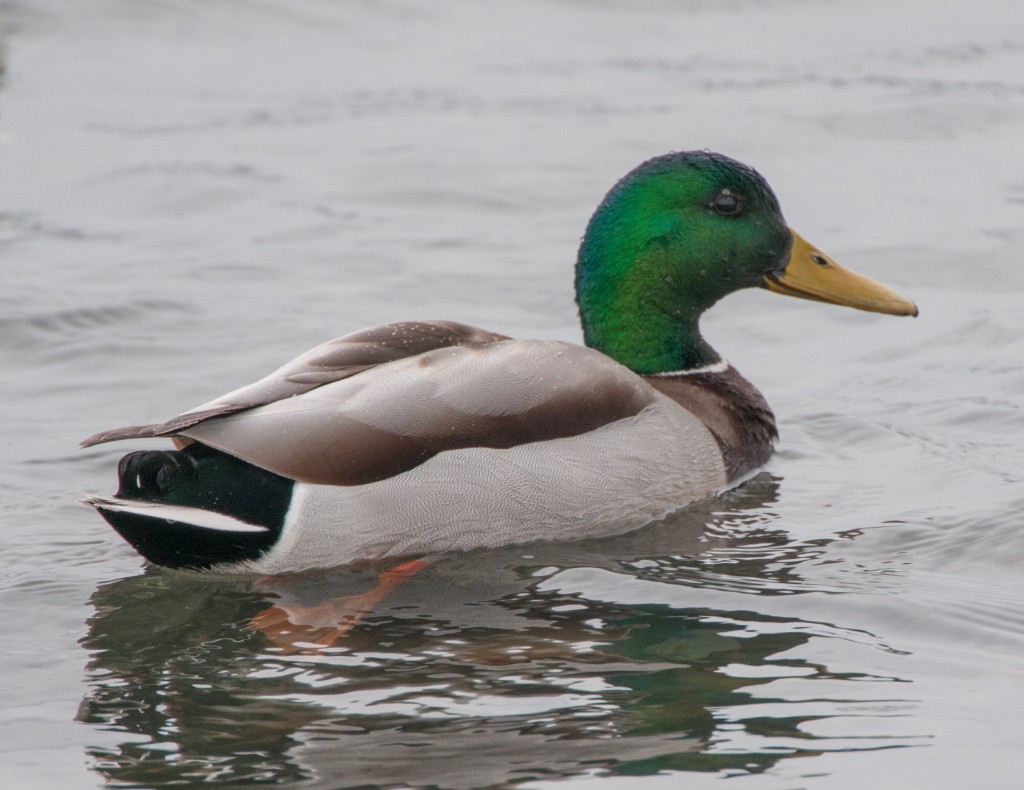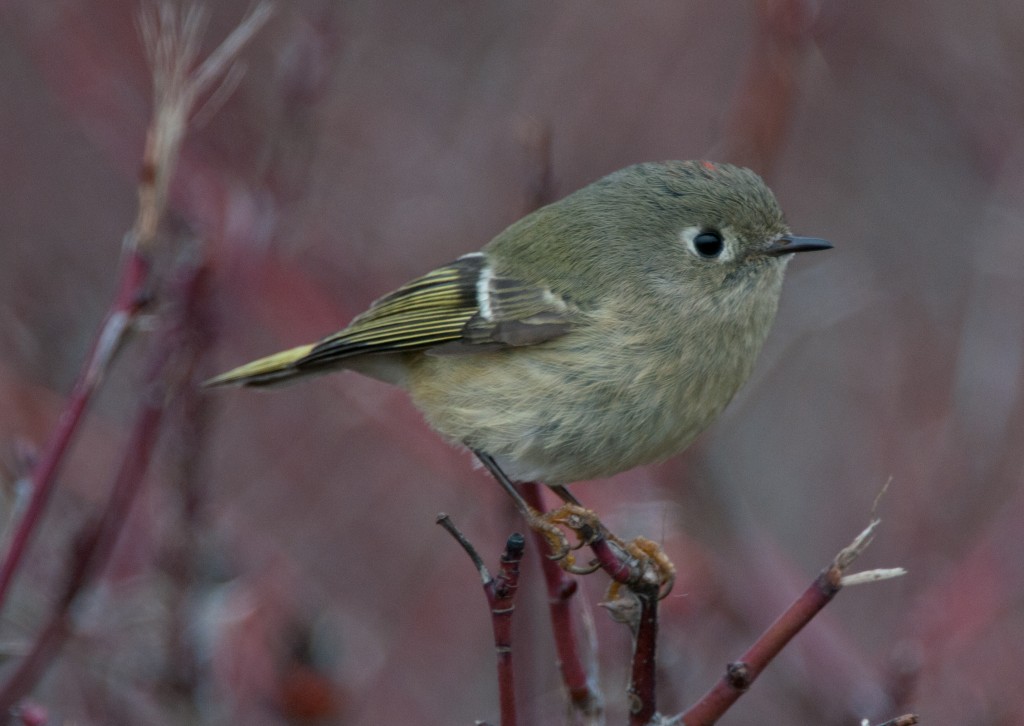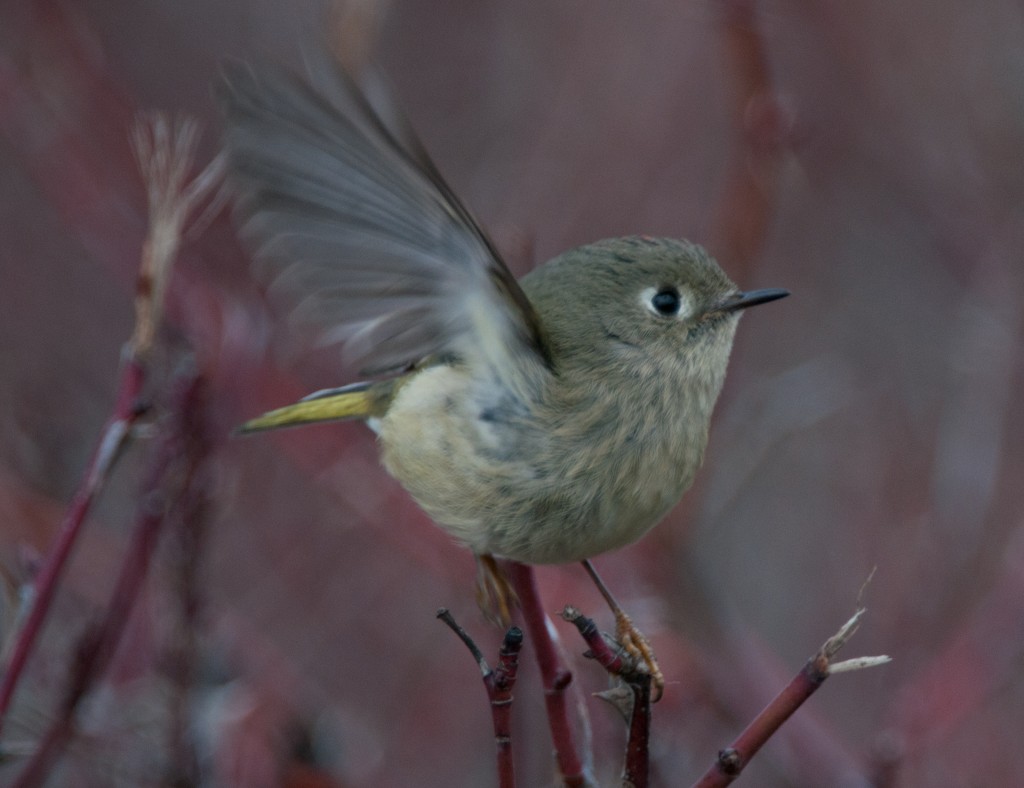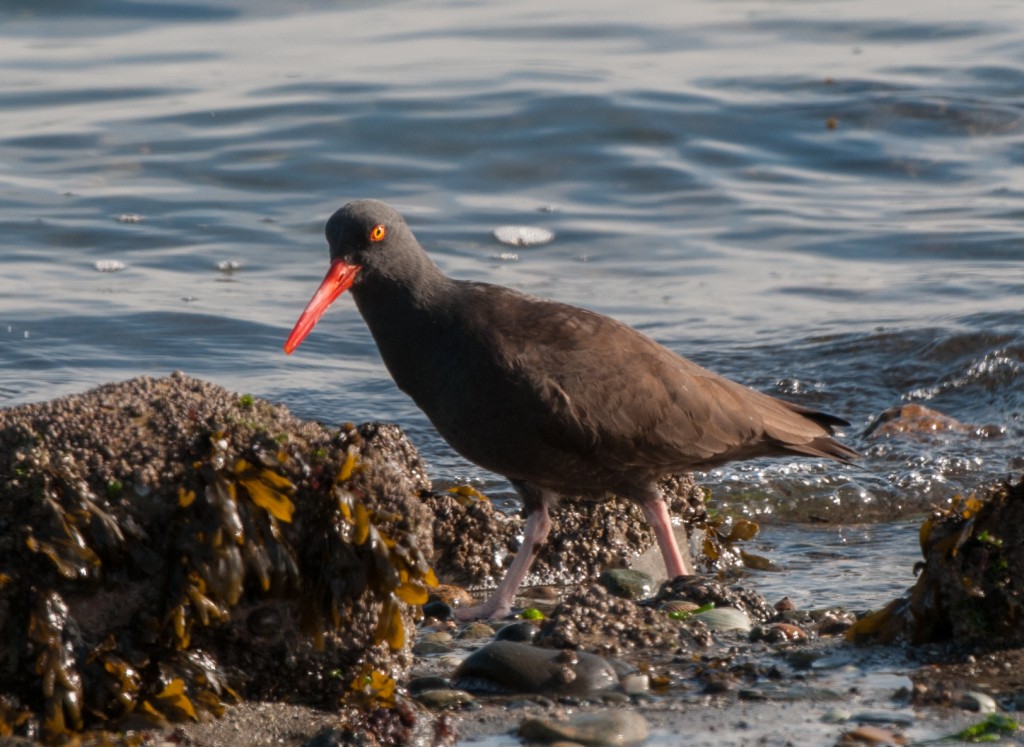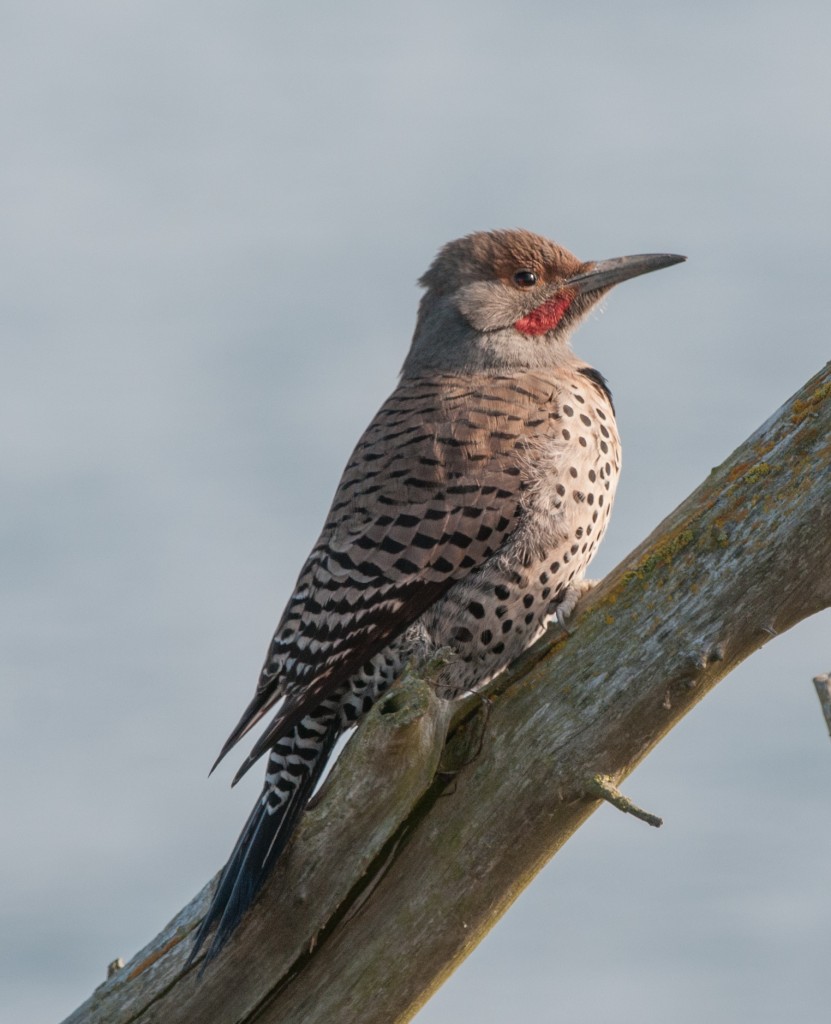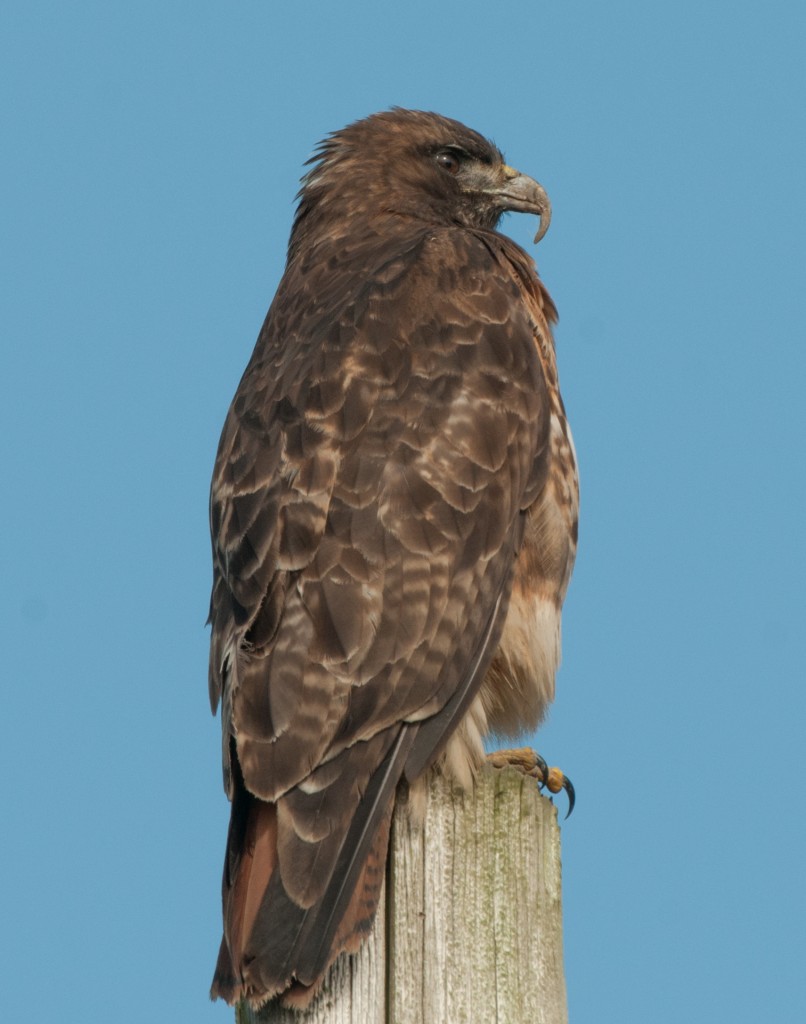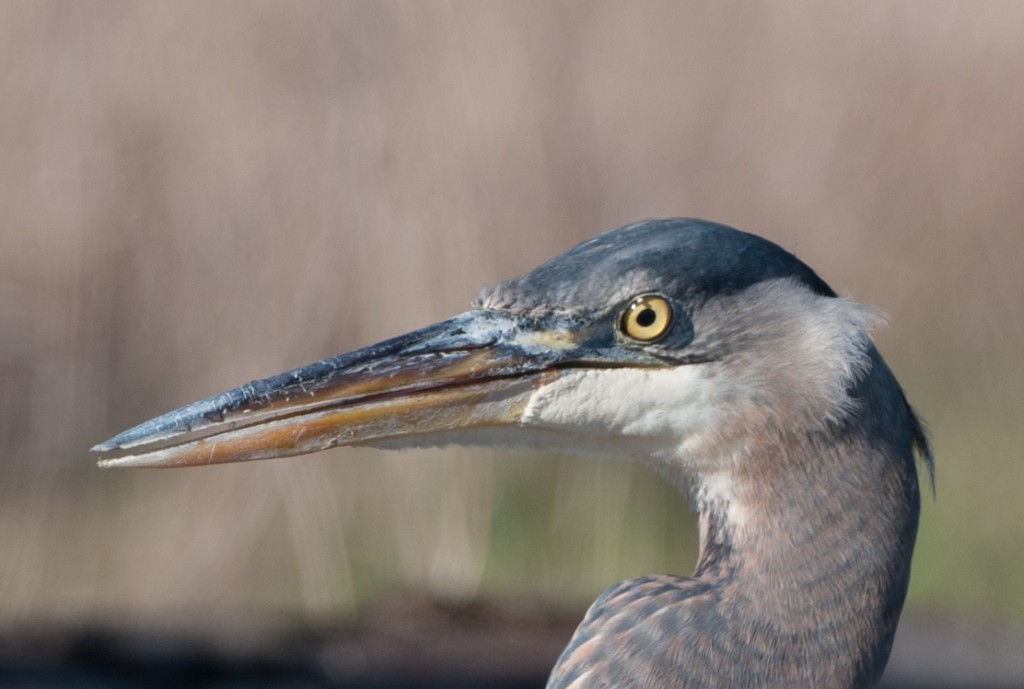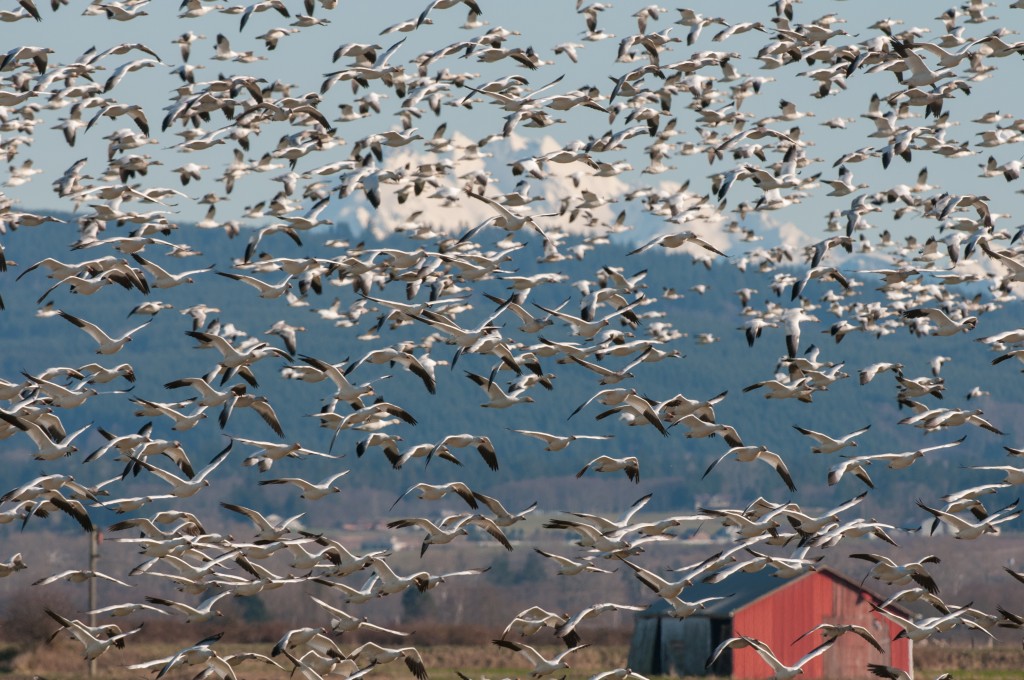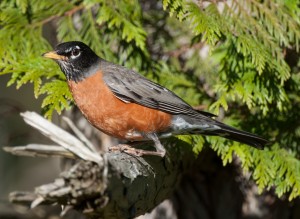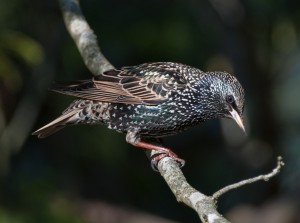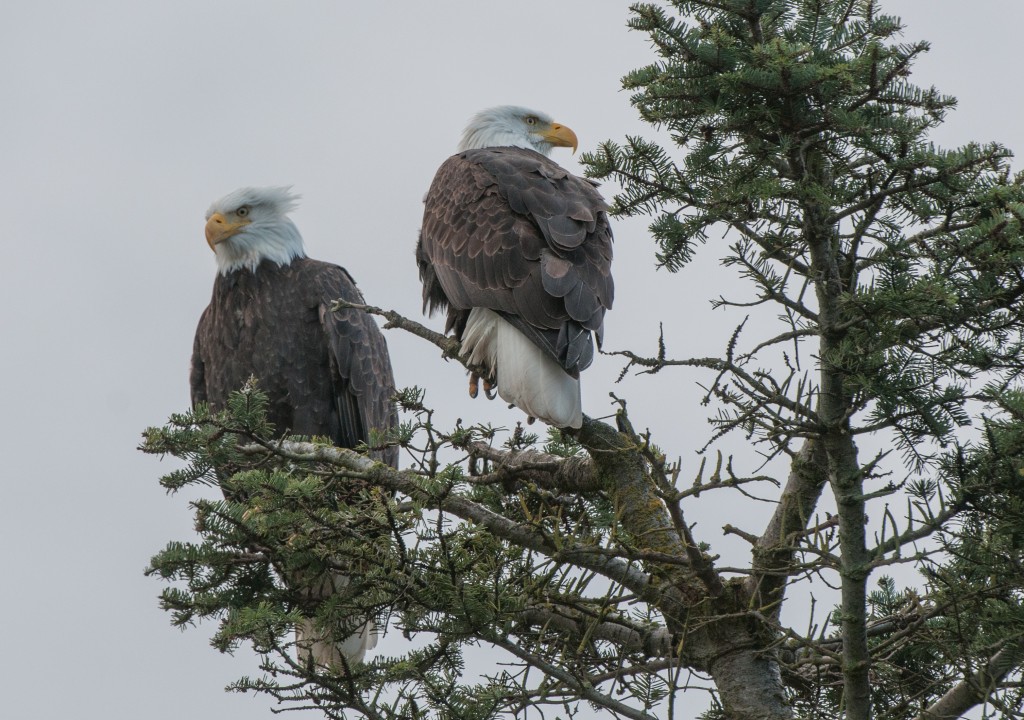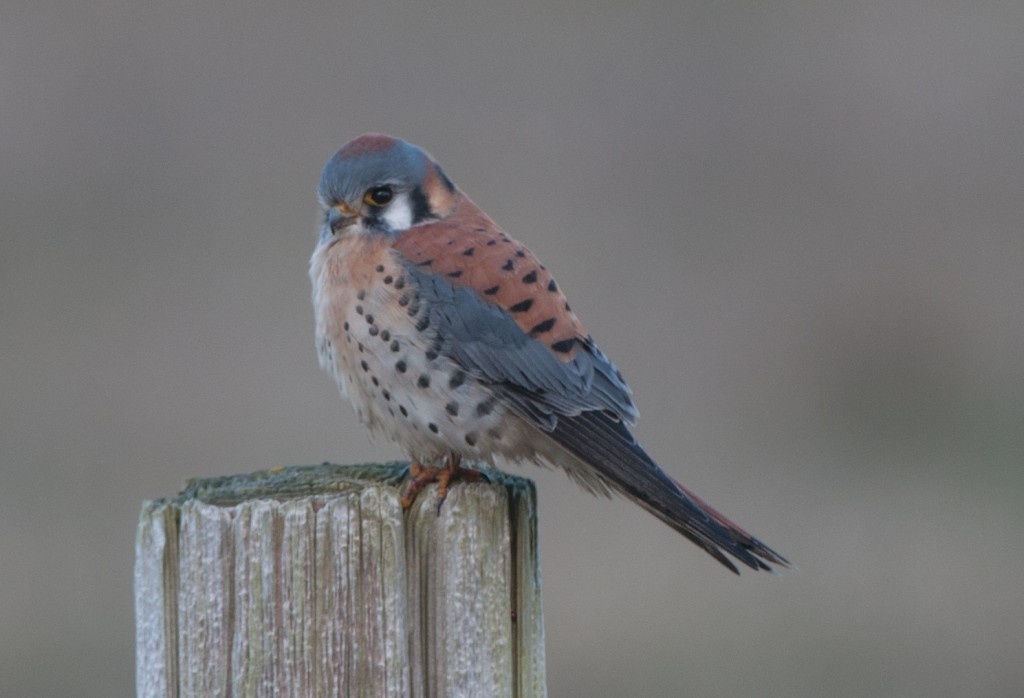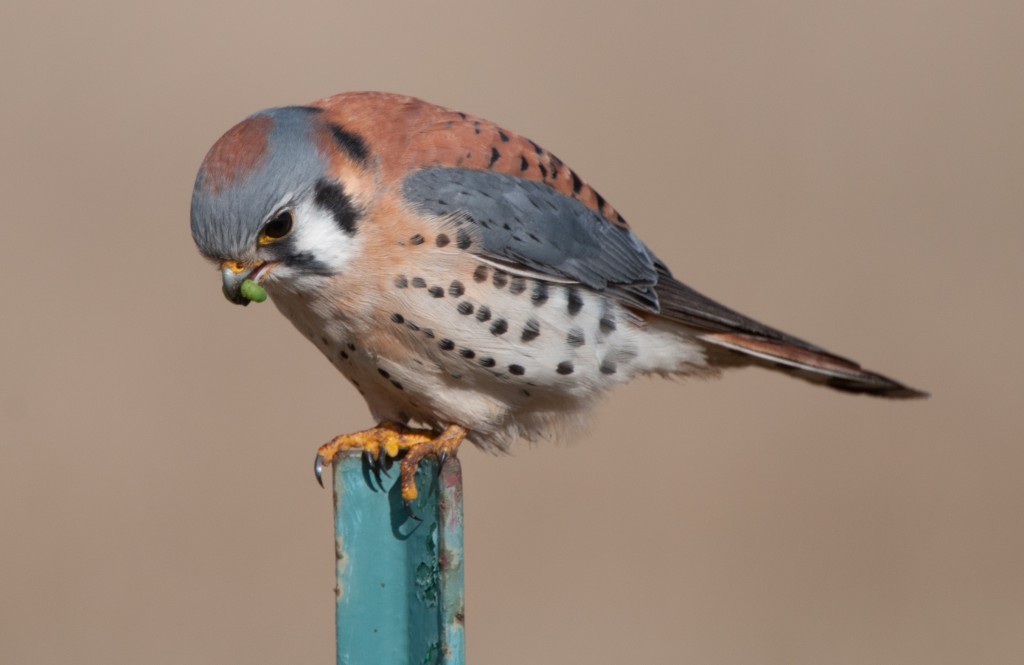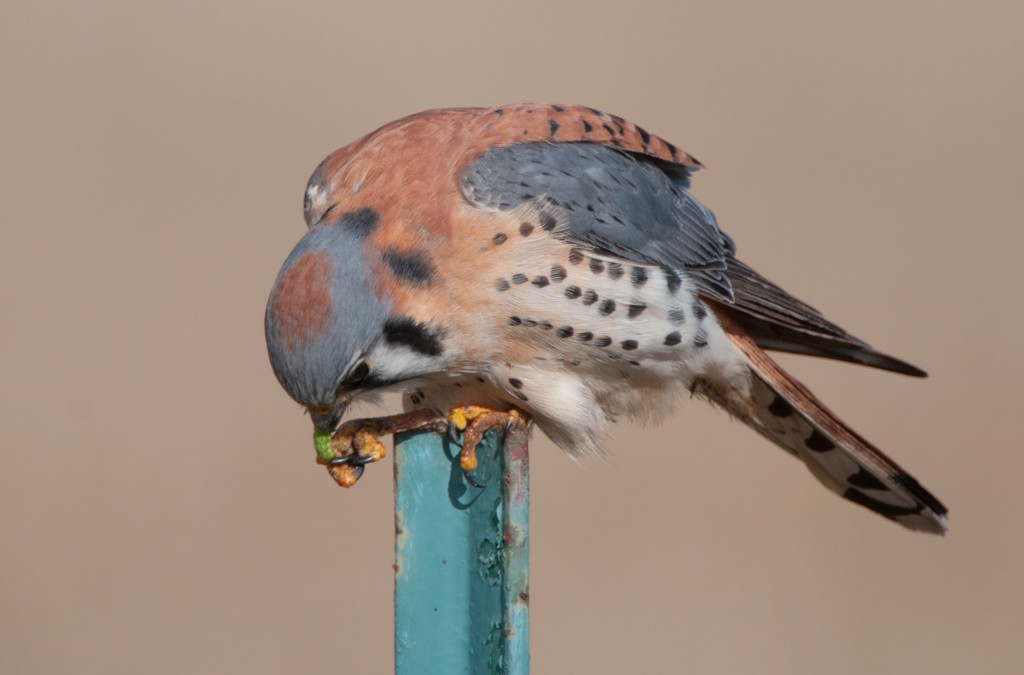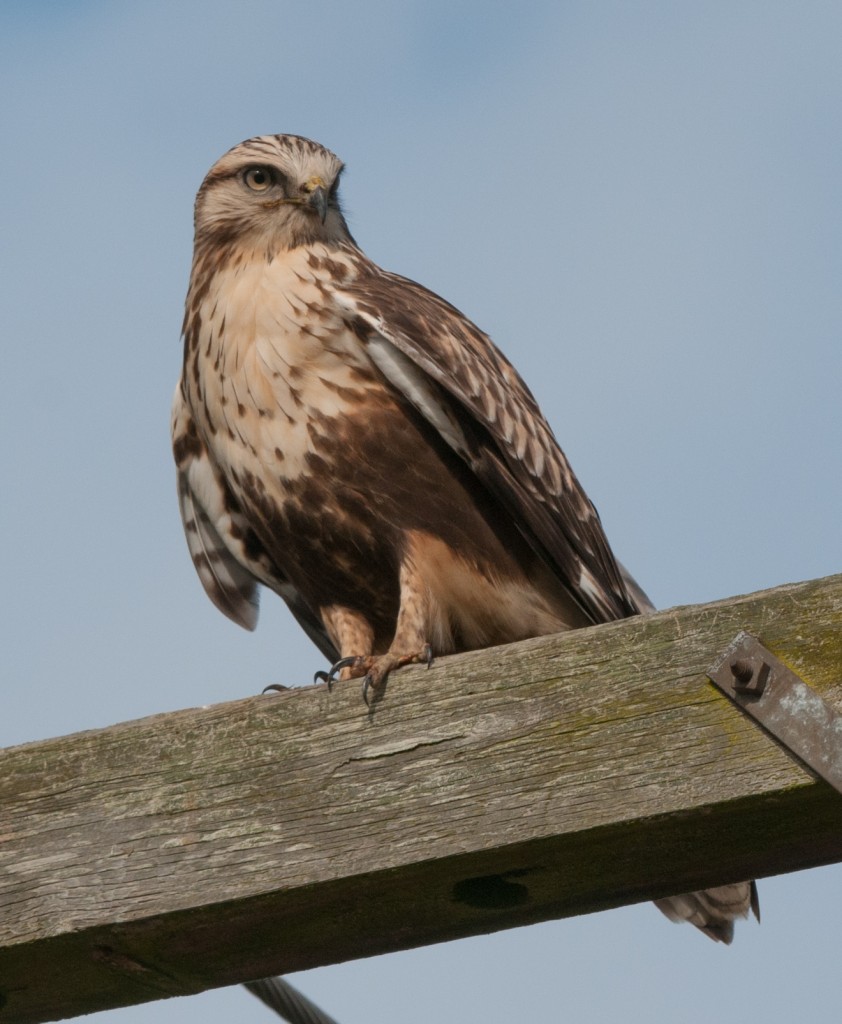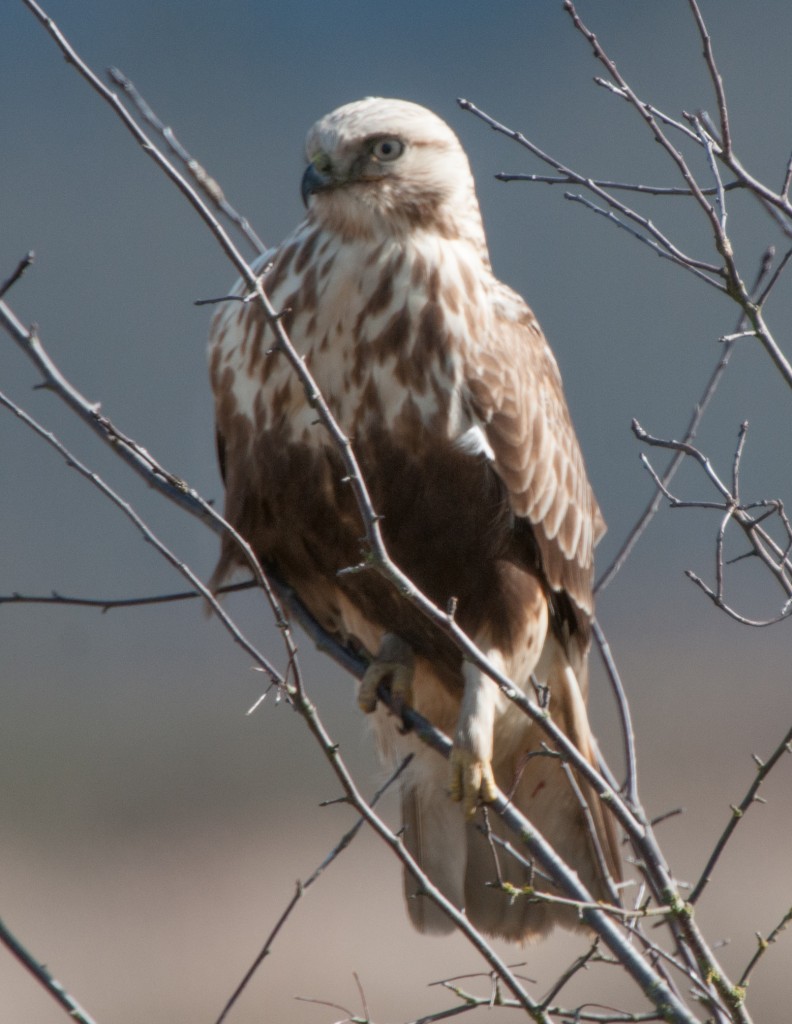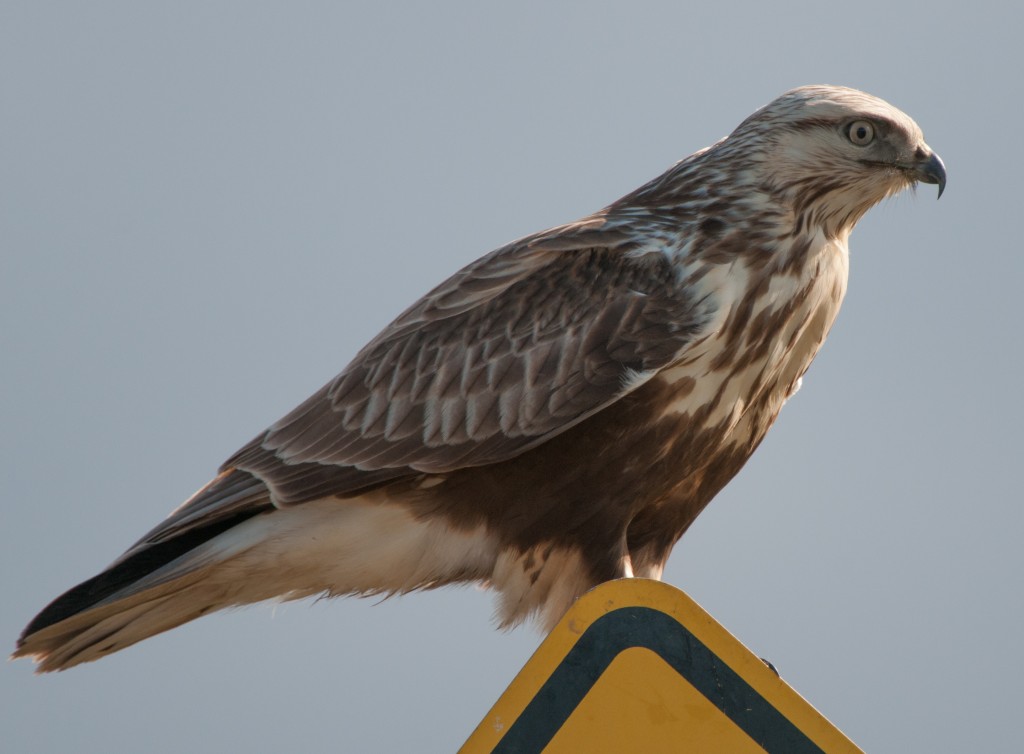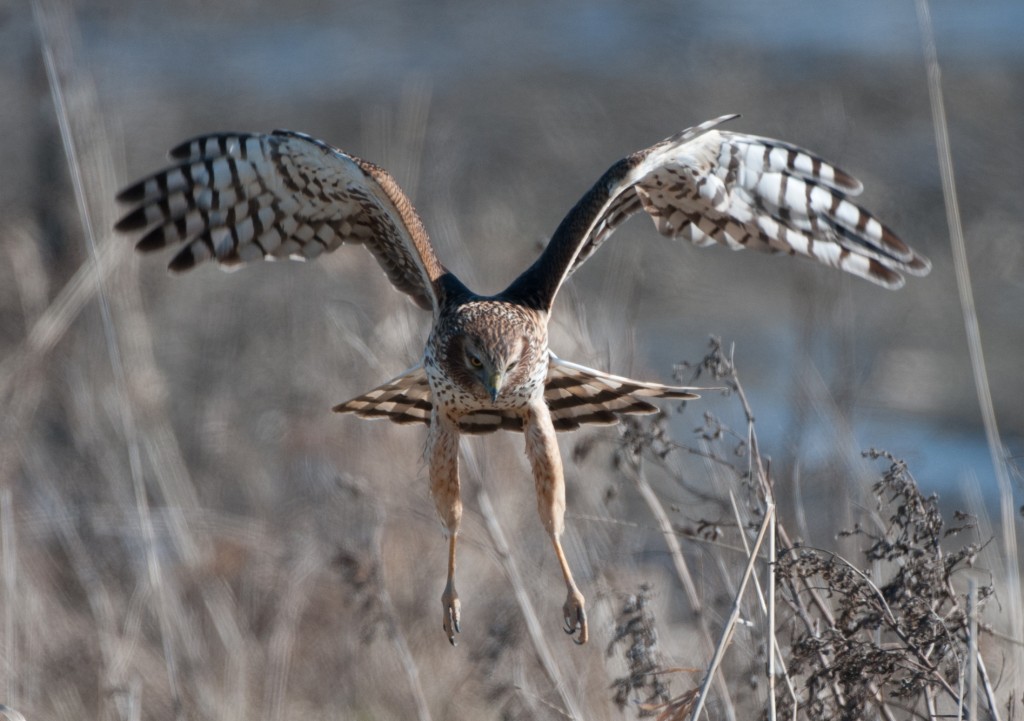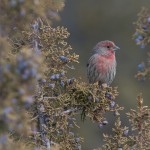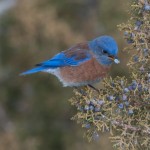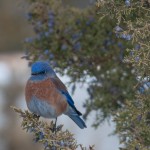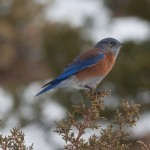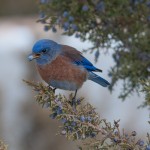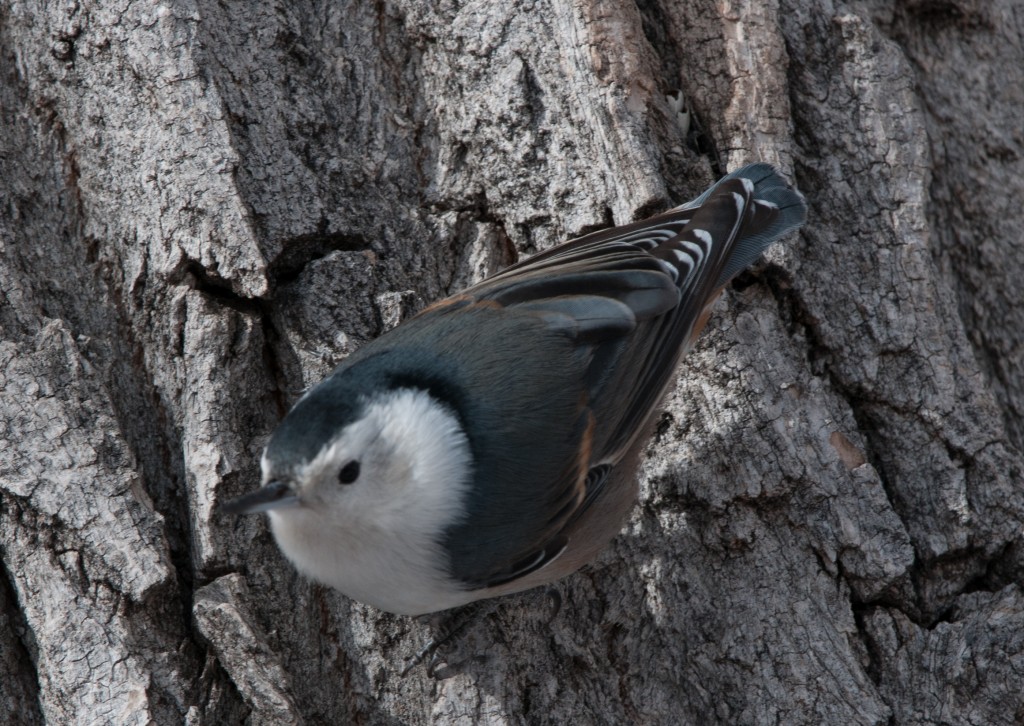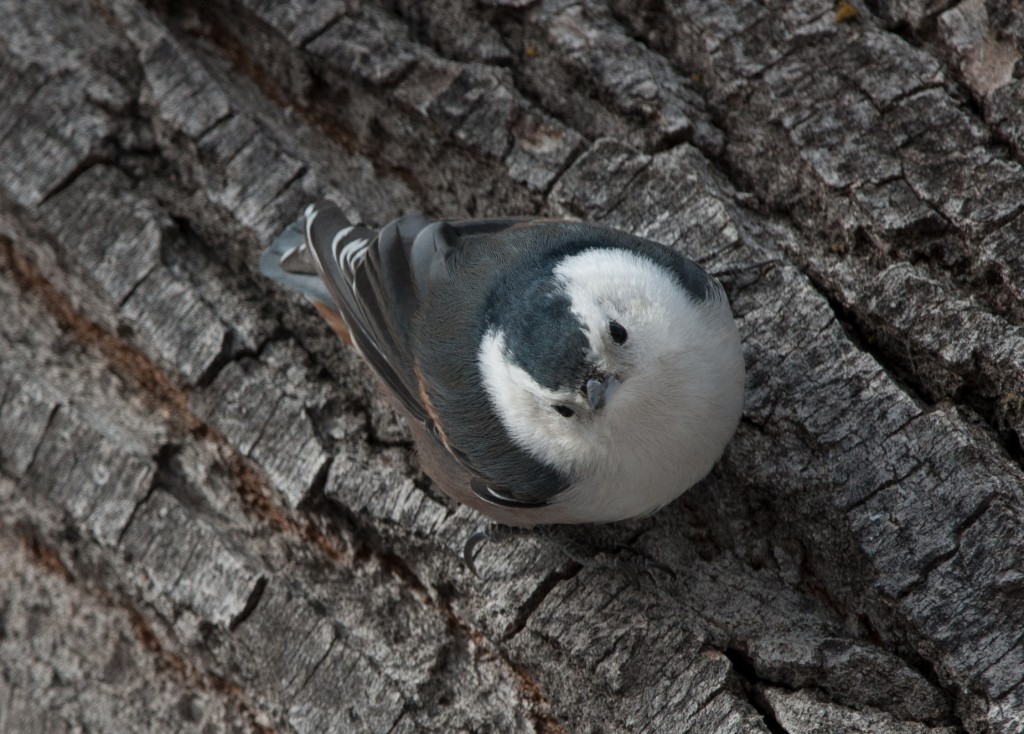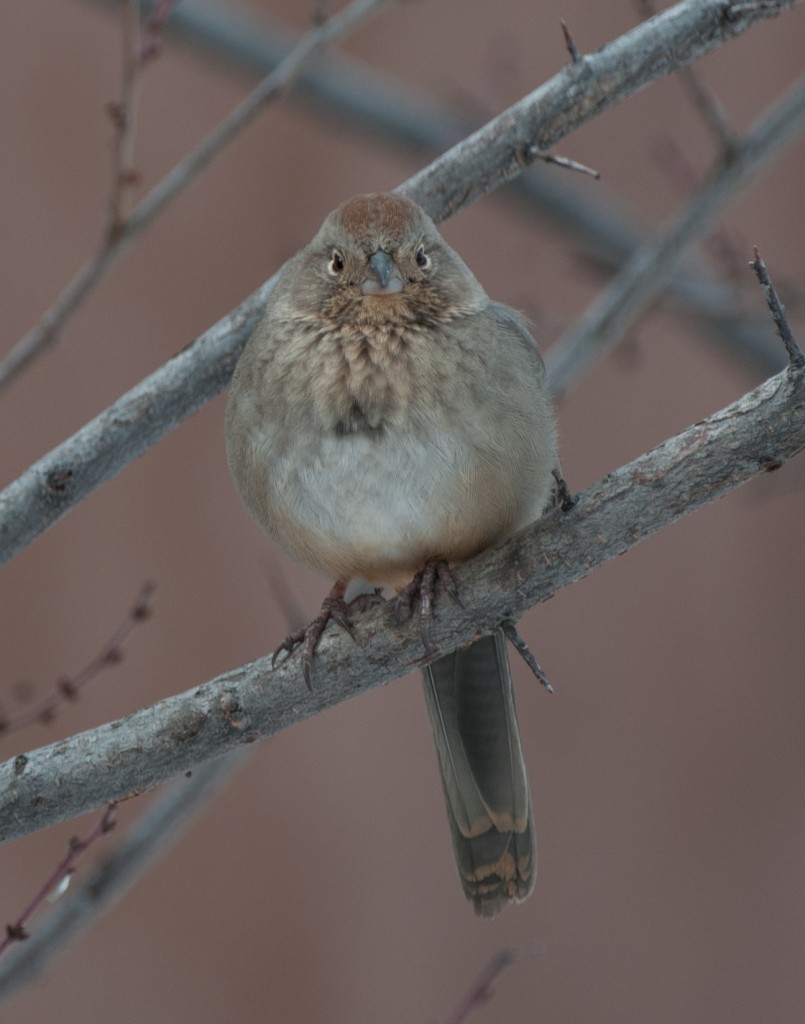I had been looking forward to a little sun on the morning of Wednesday, February 20, 2013. My plan was to spend the first part of the day, forecast to be the best part of the day, looking for birds and related photographic opportunities. The weather didn’t cooperate so I took a nap instead (always an optional strategy) but elected to try for a little photography in the afternoon, even though the weather wasn’t any better. Once out I experienced a little intermittent rain but it didn’t keep me from my appointed rounds.
The first part of my journey took me around March Point where I again encountered (presumably) the same Black oystercatcher I had seen on the weekend. (See previous post.) On this day I had my 1.7x tele-extender mounted with my 200-400mm lens which gave me the opportunity to enlarge images substantially. Even though the oystercatcher was further from me on this day I think I obtained better photos.
Next up was a cooperative Red-tailed hawk… perched in a tree! It’s discouraging to have to photograph them on lines or poles, but this one sat while I took several photographs.
My next find, just off Memorial Highway was another male American kestrel. I seem to have had quite an involvement with that bird over the past couple of months… first at the Bosque del Apache NWR (see prior post) and last weekend above the Samish Flats (also a prior post). But that didn’t stop me from taking more photographs of this cooperative bird.
On the way back home I found that the ducks (Northern Pintails and Mallards) had moved closer to shore around March Point despite an ebbing tide, so aided by the tele-extender I managed photos of the ‘quackers’.
Just as I was about ready to leave the last group of ducks I saw some movement in some bushes along a pullout from the road. I tried ‘pishing’ and for a moment thought I was going to be joined in my car by a Ruby-crowned kinglet. Unfortunately I had my shutter speed set too high, but my Adobe Lightroom software allowed me to significantly lighten the photographs to where they seem very acceptable to me. The kinglet is a difficult bird to photograph (due to size, movement and usual habitat) and I was thrilled to be able to get such good photos. On several occasions the bird came so close to my car that I was unable to focus on it.
I sometimes worry that fate has set up one of these days to be my last so that I can go out in a blaze of glory. But I seem to keep hanging in there for more photos, even on unpromising days!
Waving to you a fond farewell for now… thanks for frequenting my blog!

